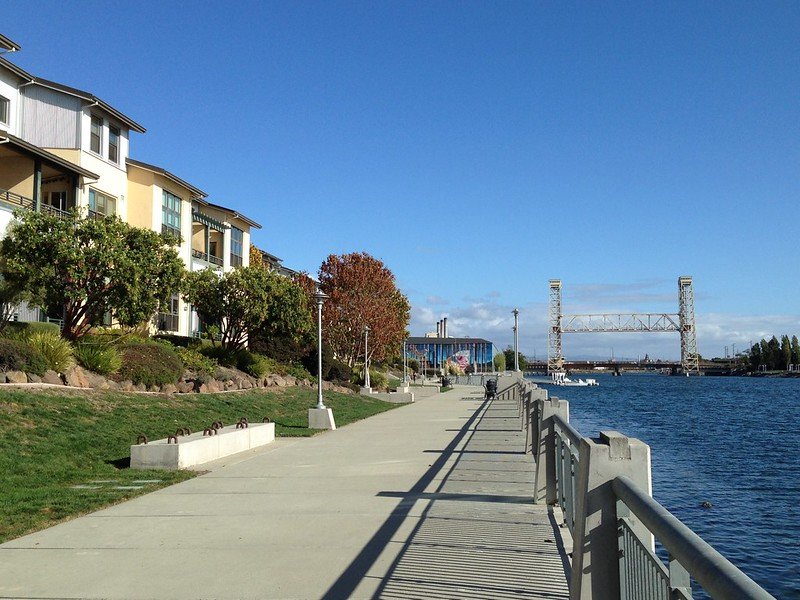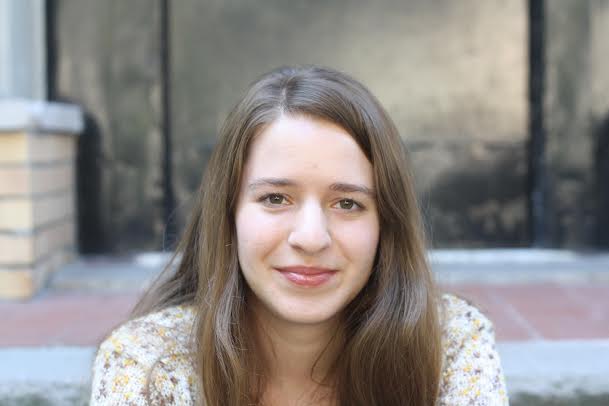The story was originally published by Next City.
When Impact Justice brainstormed what would later become the Homecoming Project, the concept was simple enough: The organization, founded to find better solutions to criminal justice reform, would act as matchmaker between Oakland residents with an extra bedroom to rent and people leaving prison who needed a place to stay. It wasn’t unlike Airbnb.
It also wasn’t always an easy sell. Tyler Jank had an empty room in his Oakland home. A teammate through his rec league, who works for Impact Justice, suggested he rent it through the program — an idea he initially deemed “weird.” When Eleanor Lefiti heard about it toward the end of her 27-year incarceration, she worried such a new program would be filled with drama.
Both, however, decided to give it a shot — and joined a growing group of people willing to open their homes and lives to one another. “We started this thinking we were building a housing project,” says Impact Justice president Alex Busansky. “What we ended up building was a relationship program.”
Crushed by negative news?
Sign up for the Reasons to be Cheerful newsletter.In September, Impact Justice was announced as the winner of a $2.5 million award to both expand the Homecoming Project in the Bay Area and create a model for other cities to replicate. The grant provides much needed funding the organizers have struggled to secure since the pilot launched in 2018. “We now have a bank of resources to allow our participants to feel valued, included and supported,” says Terah Lawyer, program manager for the Homecoming Project.
Previously, she notes, the small team scrambled to meet the needs of the program and its participants. In two years they have placed 27 participants across Alameda County, spending roughly $10,000 to secure a six-month stay for each participant — meaning rent paid directly to their hosts — alongside case management and training for hosts.
On the front end, hosts learn about the school-to-prison pipeline, challenges with the traditional transitional housing model, what causes recidivism and needs of people returning from prison. Once a participant is placed in their home, the Homecoming Project provides case management to help them secure things like a driver’s license, Social Security card, bank account, employment and tools to navigate life on the outside.
For Jank, who decided to open his home through the Homecoming Project in the midst of this summer’s protest movement, it’s been about putting a human face and story to the challenges of returning home after years in prison. “You see the struggles firsthand — you realize this is necessary,” he says of the Homecoming Project. When his roommate faced barriers in opening a bank account, Jank wrote up a proof-of-residence form as his landlord.
For Lefiti, now adjusting to life outside after nearly three decades in prison, she still tears up when speaking of support provided by the program. “I cried when I saw the home and I’m still feeling it right now,” she says. “They made me feel so accepted — and there were a lot of fears coming out here, of how are people going to perceive us?”

When she moved into her Fruitvale, Oakland home, Lawyer gave Lefiti bedding and took her food shopping. Her case manager provided her with a laptop and offered a crash course on the internet and email.
“I get attached to every placement and I know every single story of every placement,” Lawyer says of her role as matchmaker. Over two years, she intimately knew this program worked on multiple levels, by providing a more secure, safer residence than transitional housing offered by the state, by connecting formerly incarcerated individuals to a supportive community on the outside, and ultimately reducing the stigma of being incarcerated.
None of the participants recidivated; all are either employed or enrolled in school with an average of securing employment within two weeks. After six months participants are free to sign their own lease agreements with their hosts, which some have chosen to do, or move on to other housing.
But even as the program attracted media coverage and interest everywhere from New York to Wisconsin, funding the program was a challenge. “Before the grant, this was the most popular project I’ve ever been involved in that had no money,” as Busansky put it.
Beyond the challenge of pitching an outside-the-box proposal, private funders often hesitate to support housing initiatives (as opposed to programs like job training), as it’s seen as an expensive and daunting endeavor. An application for $3 million for rental assistance from California’s Board of State and Community Corrections, which connected the dots between reentry and homelessness, was denied.
But homelessness is expensive for cities, as is relying on new construction to solve housing needs. At the same time, reducing recidivism and prison populations can dramatically save taxpayer money. These were all arguments Impact Justice made in its application for the Housing Affordability Breakthrough Challenge offered by Enterprise Community Partners and Wells Fargo this January. Out of 885 proposals, they were one of six winners to secure a two-year, $2.5 million award.
“The fact they piloted this idea with such success gave our judges across three different application rounds a lot of confidence that this is not an idea that’s so out there, who knows if it could work?” says Christi Smith, senior program director at Enterprise. “They’re doing it, showing success and demonstrating impact. It’s a terrific opportunity to build as a model because every city, every state, is facing this challenge.”
This funding will house a total of 120 people returning home from prison, expanding it from Alameda County to neighboring Contra Costa County. That expansion will still not meet the huge post-prison housing need the Homecoming Project has identified, Lawyer notes.
That’s why their investment into evaluating the program impacts and creating a model for larger replication is so important. “Over the next year we are going to build that toolkit,” Busansky says.
He points out Impact Justice is not a housing organization; rather it works in innovation and research. “We want to stand up ideas, prove they work and show how they could be replicated,” he says. “Homecoming Project is cheaper than any other housing option that government has — they should take it on. There may be other nonprofits that want to do this — a church group or community-based organization — they should take it on. If we can give them the tools to do that, it will spread across the country in a way we could never do.”
The Impact Justice team already planted seeds with people around the country showing this model works. “They’re all really interested but don’t quite know how it works or why it works,” says Busansky. “We tell them there’s nothing magical about it, it’s all practical.”
In her transition home from prison, what Lefiti knows is that a welcoming home and community have become crucial components to rebuild her life. “Being around everyone I was around for Homecoming Project,” she says, “It basically gave me the sense that I was going to succeed.”






